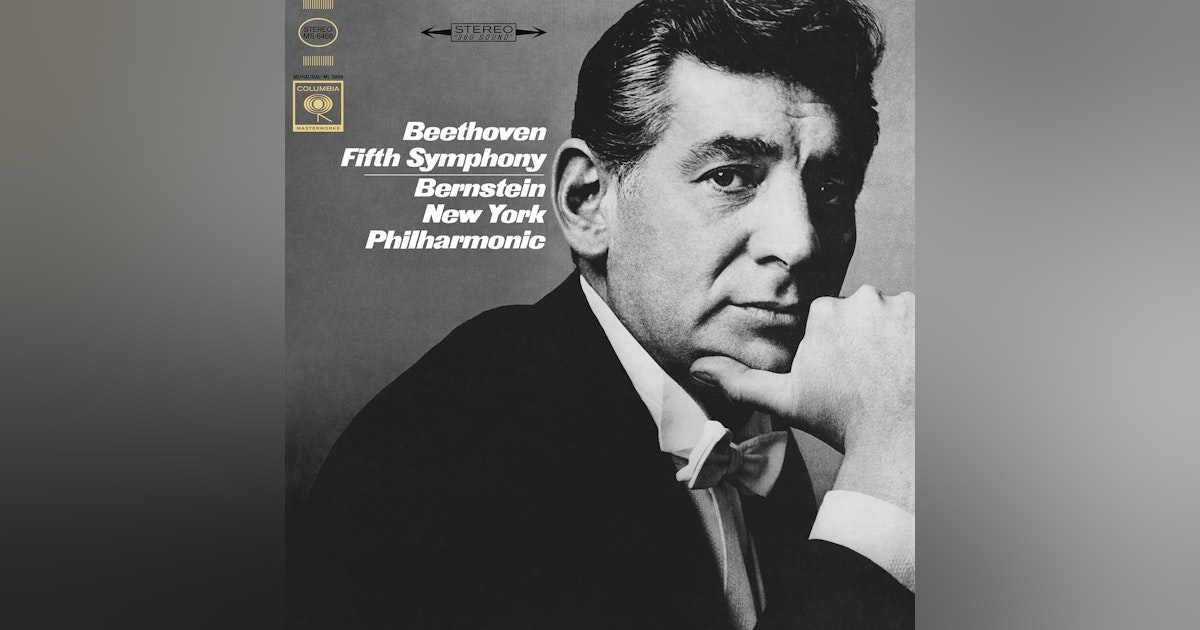Bernstein conducts Beethoven
Core Lenny

This live recording form the Deutsches Museum in Munich on October 17, 1976 is core Bernstein, whose association with Munich dates from the early 1980s (from 1983, he conducted annually there).
At the time, Joachim Kaiser, Munich's then-leading music critic, said:
Bernstein demonstrated to a spellbound Munich audience how much he is filled with Beethoven, the man is full of a freedom and fire that can be produced and reproduced. Even if Bernstein's leaps, crouches and crescendos may seem violent to anxious listeners, the inner rightness of the music – which sounds natural, powerful, wonderful and relaxed – is overwhelming.
Anyone who saw Bernstein conduct can relate to the crouches and the suchlike; any orchestral plays can see his gestures always had pups (and were clearer than legend had it!)
Let's start at the end: Leonore 3 has, as one might expect, a portentous opening: the strings achieve near-oasis, out of which bassoons seem to climb; the arrival of 'In des Lebens Frühlingstagen” is a moment of magic on the clarinet. This is music of the theatre, and how Bernstein knows it: the off-stage “bugle” fanfares (announcing the arrival of Don Fernando in the opera). Bernstein's sense of drama is everywhere apperent: And just as the opening is predictably extended, the coda is frantic, frenzied in the extreme, full of power. This is no easy happy, ending for Lenny ...
I do urge you to hear and buy this BR-Klassik disc: the pefomance is on YouTube, though, below:
That, then, is Bernstein at his best, truest to himself, and sets the stage (pardon the pun) for an electrifying, dramatic, near-operatic - in this light - Beethoven 5. Classical Explorer launchd with a Beethoven 5 (Curentzis); and here we are again (there have been others along the way, including a Scottish Chamber Orchestra perfomance at the Proms and Colin Matthews' arangement for piano trio). Bernsein's Fifth is less extreme than his Leonore Overure but no less exciting, no less incendiary: and here, surely, on a symphonic canvas now, is the true melding of excitement and structure. The Bavarian orchestra, as in the overture, play like Gods and Goddesses fo him, the slow movement beautifully sculpted, the Scherzo a proper Allegro, accents stinging.
The transition to the finale is faultless; and how good that Berntsein includes the repeat, so often ignored and a dramatic stroke within itself. This filmed except preserves, sadly, only the vey end of the transition and concentrates on the blazing finale:
You can see Bernstin's phenomenal technique from this angle; from the back it might look like histrionics, but everything is so clear - and indicative of what he wants. The finale is a blaze of C-Major light. Tutti chords punctuate with their sheer precision; the music never flags; the coda is, as you might expect, intense.
This significant disc is available on Amazon here. Below is an iDagio steaming of Bernstein with the New York Philharmoic in Beethoven 5 - plus, a talk which follows on after his NYPO performance. Bernstein was one of the great speakers on music, too, and his thoughts on Beethoven's creative process (which includes seeing where sketches might have led, including orchestral realisations) are revelatory. Do listen!


